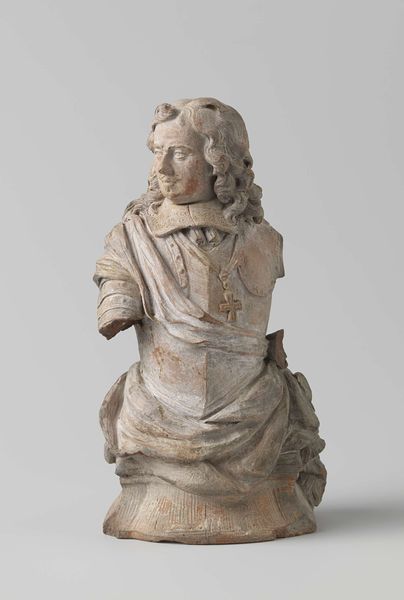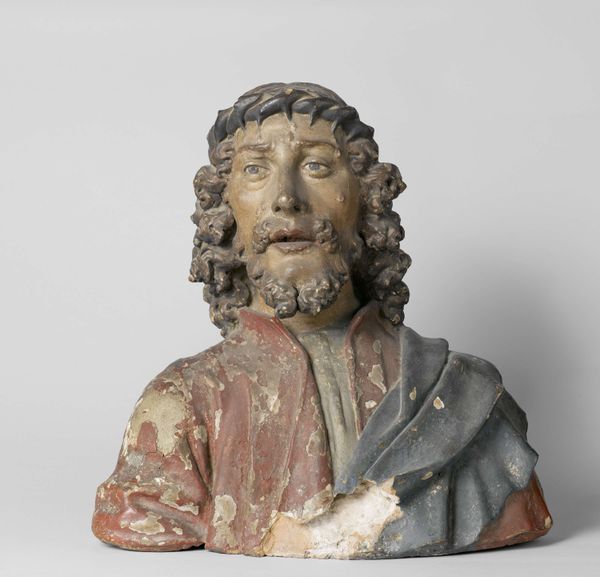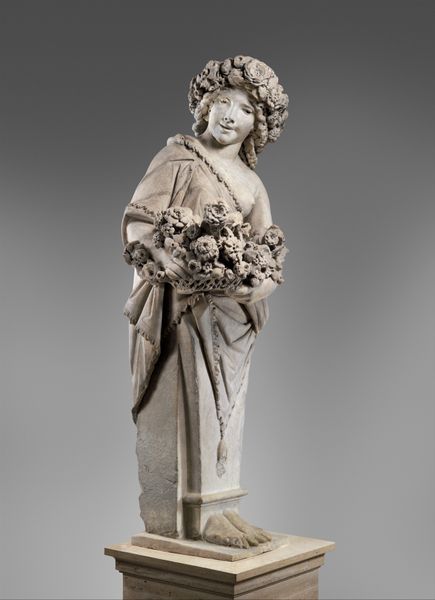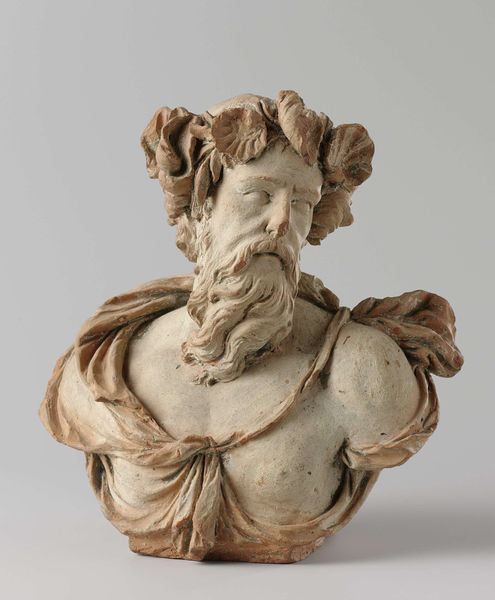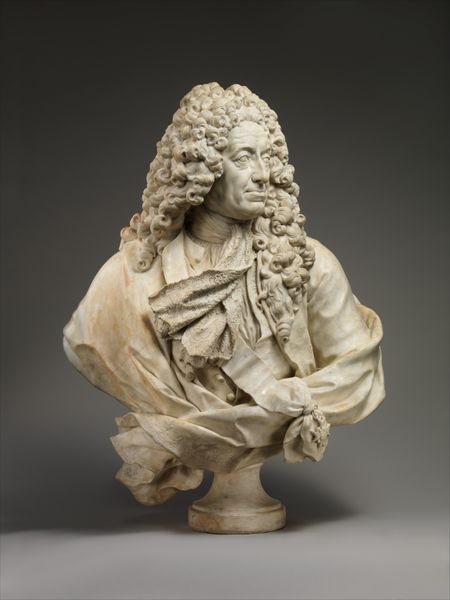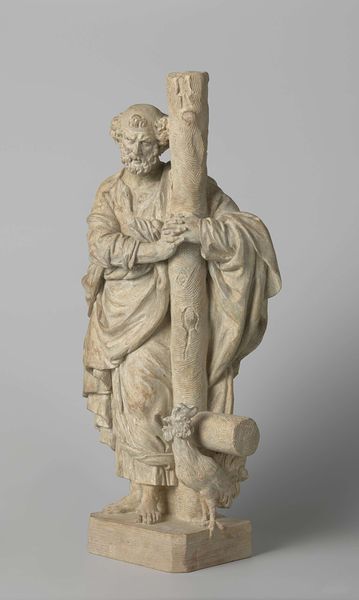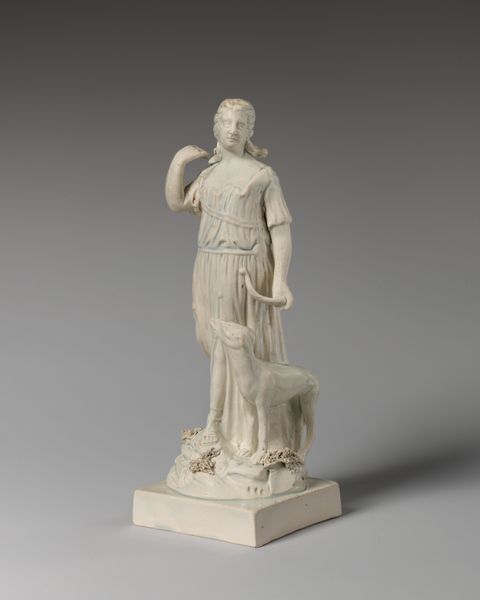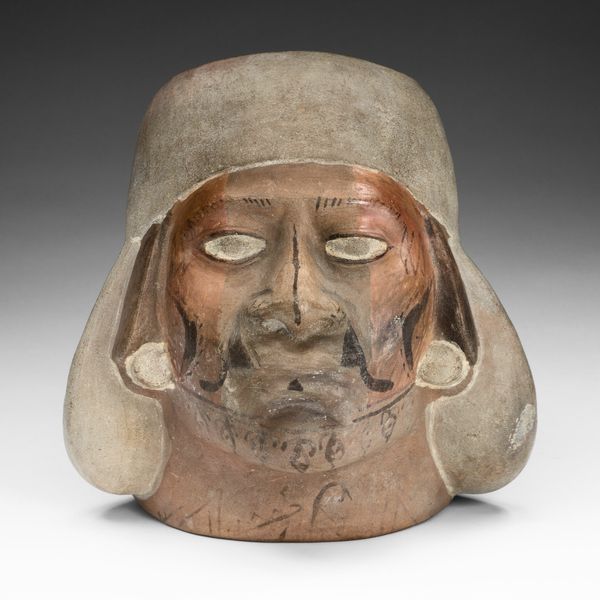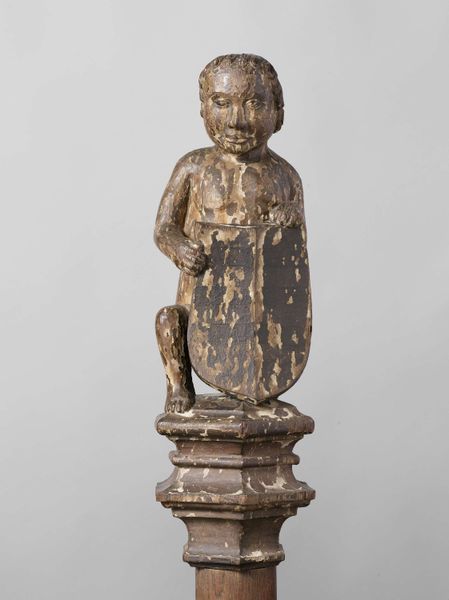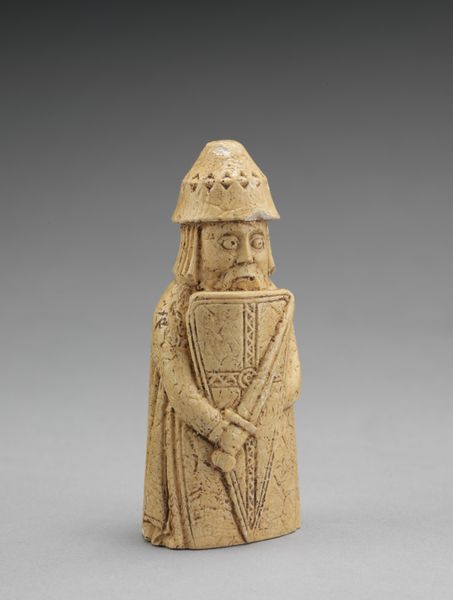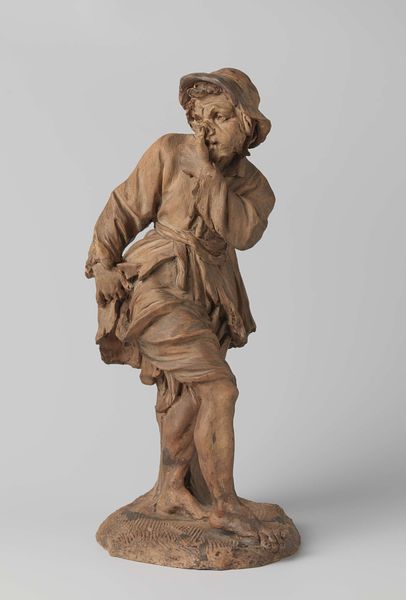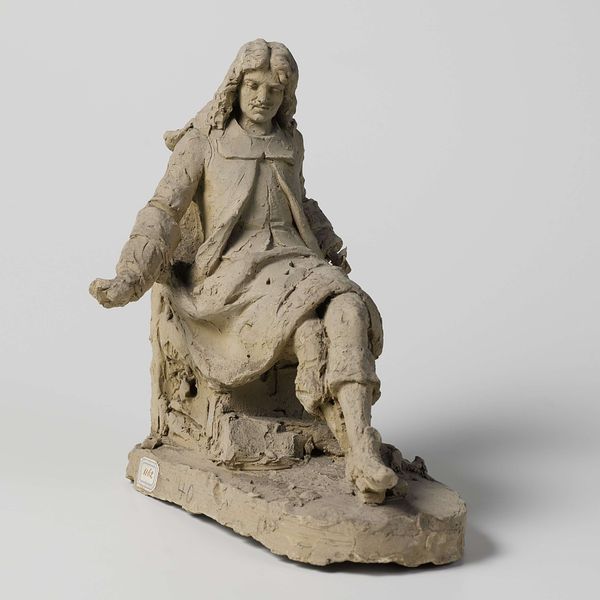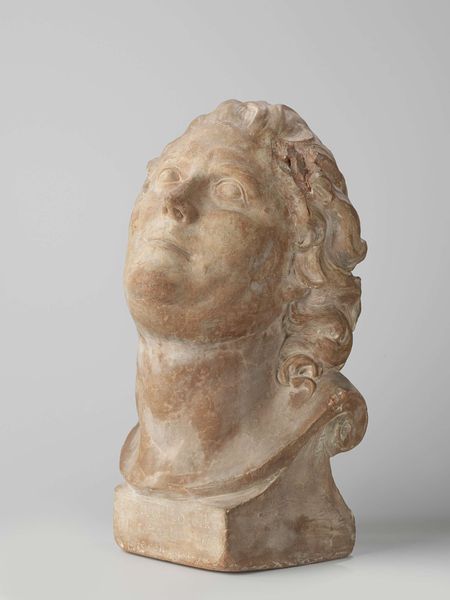
Dimensions: height 111 cm, width 76 cm, diameter 58 cm
Copyright: Rijks Museum: Open Domain
This oak figure of Admiral de Ruyter was carved anonymously, we think sometime in the 17th century. The image of de Ruyter speaks to the cultural and political climate of the Dutch Golden Age. De Ruyter was not only a military leader but became a symbol of Dutch power. The statue would once have been painted in vibrant colours to create a powerful effect. Carved ship figureheads like this one, once adorned ships of the Dutch navy. They acted as symbols of national identity, projecting Dutch maritime power and trade ambitions across the oceans. But this was also a society sharply divided by class. Figures like de Ruyter could be instrumentalised in political struggles between the ruling houses and other factions. To better understand this artwork, we can delve into maritime history, political pamphlets, and the records of the Dutch Admiralty. These sources help us to interpret the visual culture of the time. Statues like this tell us much about the social and institutional contexts in which they were produced.
Comments
No comments
Be the first to comment and join the conversation on the ultimate creative platform.
